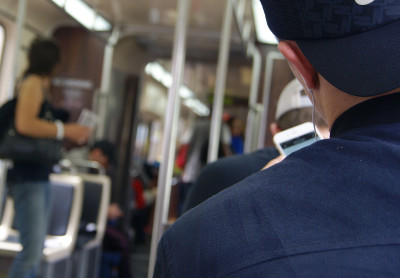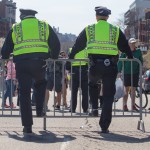 Residents will have the chance to use technology that will improve their transportation experience as a result of a pilot currently in development by the Massachusetts Bay Transportation Authority.
Residents will have the chance to use technology that will improve their transportation experience as a result of a pilot currently in development by the Massachusetts Bay Transportation Authority.
The MBTA will work with urban technology and media company Intersection to bring beacon technology to railway stations, said company spokeswoman Caitlin Kasunich.
“Beacon technology sends one-way signals to enabled smartphones to provide a more contextually relevant experience,” Kasunich wrote in an email. “Beacons are transmit-only Bluetooth devices that send out a signal that can only be used by user-enabled mobile apps to trigger location-specific content.”
Intersection will place a network of Gimbal Bluetooth Smart beacons at specific railway stations within the MBTA, according to a Friday press release from the company.
“Gimbal beacon technology is enabling cities to become more connected and deliver enhanced, relevant experiences and services to its residents and visitors,” said Ray Rotolo, senior vice president of out-of-home assets at Gimbal, in the release. “We see tremendous opportunities in leveraging key transportation hubs where millions of riders on a weekly basis can benefit from digital engagements and information.”
Tom Little, a professor at Boston University’s College of Engineering, said eye beacons can wirelessly tag objects and uses Bluetooth to do so wirelessly.
“The idea here is to walk up to the eye beacon and then it can convey the information to your phone,” Little said. “It can also be used as a way to do indoor navigation so if you know there are beacons around then your phone can tell you where you are on a map.”
Kasunich said the devices will not collect any personal information and will not violate anyone’s privacy.
“No personally identifiable information will be collected through this program, and beacons operate in a transmit mode that’s similar to GPS. They cannot see, collect or store any personal data or consumer information,” Kasunich said. “For a mobile device to detect a beacon, a user must first download an app that uses this technology and opt-in to allow the app to receive the beacon’s signal.”
The beacon technology seeks to help for those who have trouble traveling, Kasunich said.
“For people with disabilities, accessing public transit, particularly during rush hour, can be difficult without information and assistance,” Kasunich said. “Proximity technology like beacons have the potential to transform the experience for people with disabilities, for example, by offering audible wayfinding directions to the visually impaired or providing alerts when elevators are down or routes are changed.”
Several residents expressed that any advancements being made to make it easier to travel the T would be beneficial.
Dwight Mency, 34, of South End, said the MBTA can be confusing to navigate sometimes, so any technology that would help change that would be welcome.
“The T is confusing if you don’t know exactly where you’re going,” he said. “I had a lot of trouble the first time I rode it. If the T is doing anything it can to make it easier for customers to ride then that’s a good thing.”
Erica Jackson, 28, of Fenway, said she felt that the MBTA should be focusing on other improvements that it desperately needs.
“There’s plenty of work that needs to be done on the T,” she said. “I’m glad they’re trying to install technology to make it better for customers, but there are other things that are necessary for customers. For example, the Green Line still needs new cars. It’s good, I just think there are other concerns that should be addressed first.”
Mandy Triggs, 36, of Back Bay, mentioned how the MBTA still needs a lot of modifications, so she’s glad to see them start to change things.
“The T has plenty of issues and sometimes it seems as though they’re not doing much to fix them,” she said. “I’m glad they’re bringing in new technology because it means they’re trying to improve their system and update the way everything works.”




